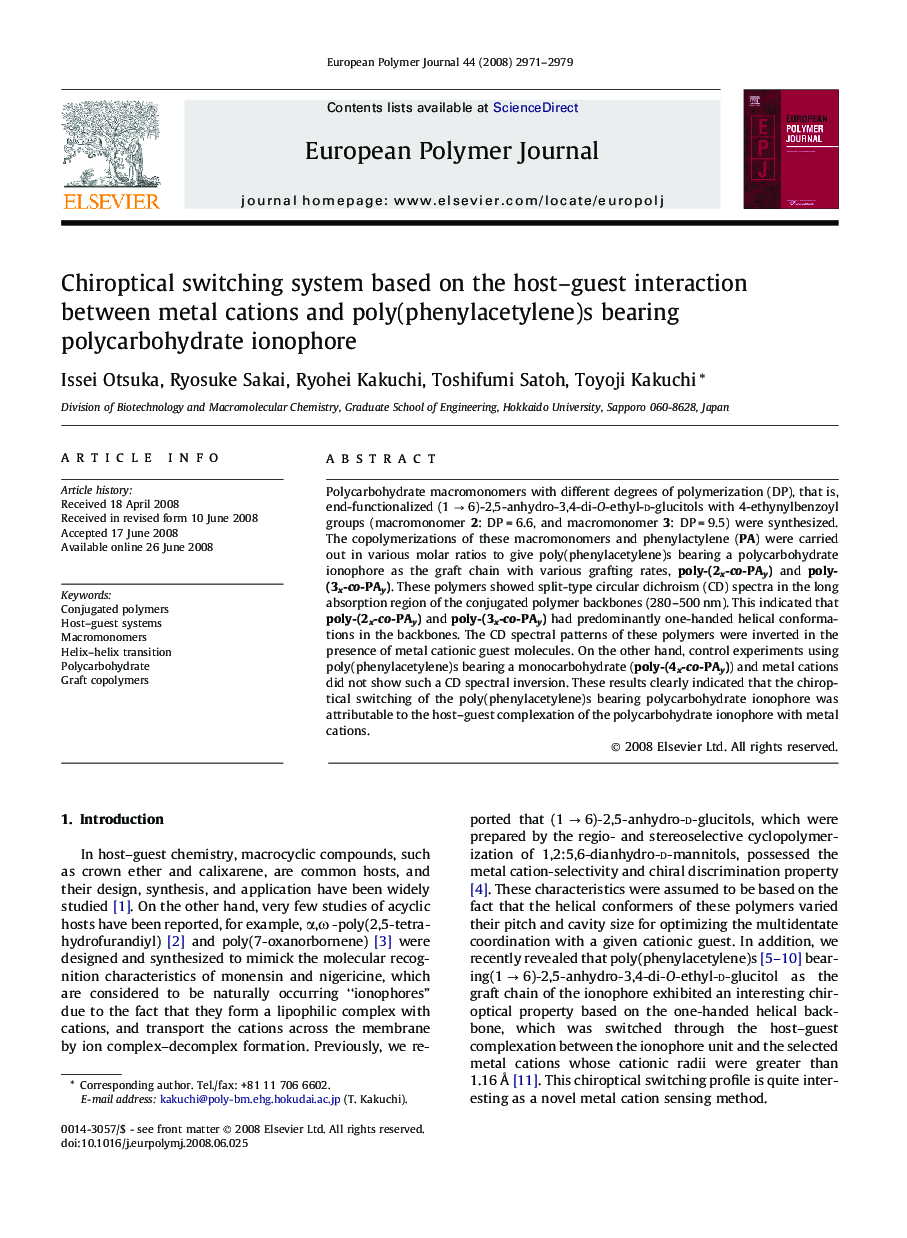| Article ID | Journal | Published Year | Pages | File Type |
|---|---|---|---|---|
| 1400061 | European Polymer Journal | 2008 | 9 Pages |
Abstract
Polycarbohydrate macromonomers with different degrees of polymerization (DP), that is, end-functionalized (1 â 6)-2,5-anhydro-3,4-di-O-ethyl-d-glucitols with 4-ethynylbenzoyl groups (macromonomer 2: DP = 6.6, and macromonomer 3: DP = 9.5) were synthesized. The copolymerizations of these macromonomers and phenylactylene (PA) were carried out in various molar ratios to give poly(phenylacetylene)s bearing a polycarbohydrate ionophore as the graft chain with various grafting rates, poly-(2x-co-PAy) and poly-(3x-co-PAy). These polymers showed split-type circular dichroism (CD) spectra in the long absorption region of the conjugated polymer backbones (280-500 nm). This indicated that poly-(2x-co-PAy) and poly-(3x-co-PAy) had predominantly one-handed helical conformations in the backbones. The CD spectral patterns of these polymers were inverted in the presence of metal cationic guest molecules. On the other hand, control experiments using poly(phenylacetylene)s bearing a monocarbohydrate (poly-(4x-co-PAy)) and metal cations did not show such a CD spectral inversion. These results clearly indicated that the chiroptical switching of the poly(phenylacetylene)s bearing polycarbohydrate ionophore was attributable to the host-guest complexation of the polycarbohydrate ionophore with metal cations.
Related Topics
Physical Sciences and Engineering
Chemistry
Organic Chemistry
Authors
Issei Otsuka, Ryosuke Sakai, Ryohei Kakuchi, Toshifumi Satoh, Toyoji Kakuchi,
